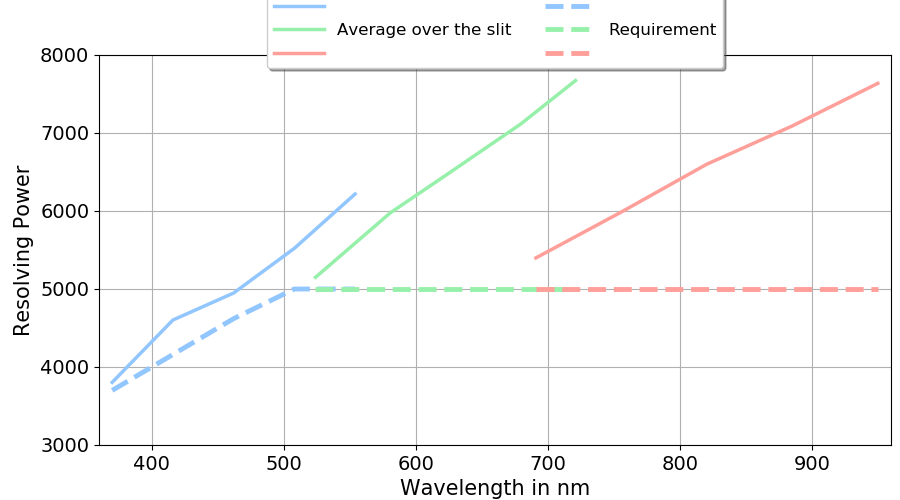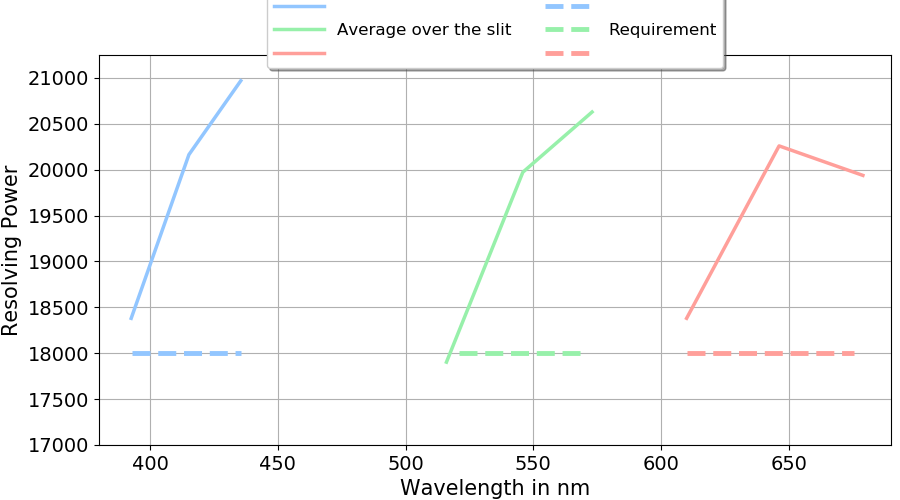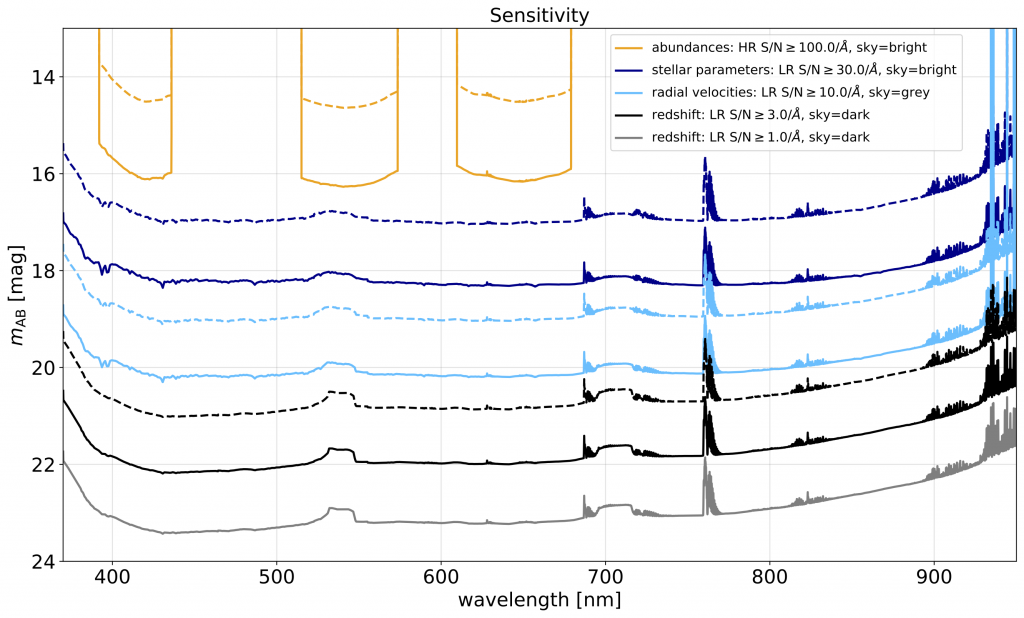Capabilities
The table and plots below document the main characteristics of 4MOST.
| Parameter | Design value | ||||||||||||||
|---|---|---|---|---|---|---|---|---|---|---|---|---|---|---|---|
| Field of view | Shape: hexagonal Size: 4.2 deg2 Diameter: 2.5 deg |
||||||||||||||
| Accessible sky (zenith angle < 55°) | 30,000 deg2 | ||||||||||||||
| Multiplex fibre positioner | 2436 | ||||||||||||||
| On-sky fibre aperture | Shape: circular Size: 1.65 arcsec2 Diameter: 1.45 arcsec |
||||||||||||||
| Minimum distance between fibres | 15 arcsec | ||||||||||||||
| Expected on-target fibre-hours per year | LRS: 3.2 Mh/yr HRS: 1.6 Mh/yr |
||||||||||||||
| Overheads | 3.5 min for the field acquisition (telescope preset), 4.4 min for each science exposure including attached calibrations | ||||||||||||||
| Detectors | Readout noise: < 2.3 e- Readout modes: normal (100 kHz), fast (400 kHz) Binning modes (cross-dispersion × spectral): 1×1, 2×1, 1×2, 2×2, 1×4 |
||||||||||||||
| Low-resolution spectrographs | |||||||||||||||
| Multiplex | 812 (× 2) | ||||||||||||||
| Wavelength range | 370 – 950 nm | ||||||||||||||
| Spectral resolving power | 4000 – 7700 (see figure below) | ||||||||||||||
| Spectral sampling | ≥ 2.5 pixel/FWHM | ||||||||||||||
| Radial velocity accuracy | < 1 km/s | ||||||||||||||
| Sensitivity | Limiting AB magnitudes for S/N = 10 Å-1, 6 × 20 min exposures, mean seeing, new moon (also see figure below):
|
||||||||||||||
| High-resolution spectrograph | |||||||||||||||
| Multiplex | 812 | ||||||||||||||
| Wavelength range | 392.6 – 435.5, 516 – 573, 610 – 679 nm | ||||||||||||||
| Spectral resolving power | 18,000 – 21,000 (see figure below) | ||||||||||||||
| Spectral sampling | ≥ 2.5 pixel/FWHM | ||||||||||||||
| Radial velocity accuracy | < 1 km/s | ||||||||||||||
| Sensitivity | Limiting AB magnitudes for S/N = 100 Å-1, 6 × 20 min exposures, mean seeing, 80% moon (also see figure below):
|
||||||||||||||
Spectral resolution


Left (click to enlarge): spectral resolving power of the low-resolution spectrographs in the blue, green and red wavelength channels. The dashed line shows the requirement. Right: same for the high-resolution spectrograph.
Sensitivity

Expected 4MOST point-source sensitivity for the S/N per Å values and sky conditions indicated in the legend. The solid lines are for a total exposure time of 120 min, whereas the dashed lines are the limits for 20 min exposures. The approximate conversion to S/N per pixel is obtained by dividing the HRS values by 3.3 and the LRS numbers by 1.7. This plot is representative for an entire 4MOST survey, not just for the optimal conditions. The sensitivities shown are those required by typical science cases, i.e. for obtaining detailed elemental abundances of stars (orange), stellar parameters and some elemental abundances (dark blue), stellar radial velocities (light blue), and galaxy and AGN redshifts (black: 90% completeness, grey: 50% completeness). These sensitivity curves were computed using the 4FS Exposure Time Calculator